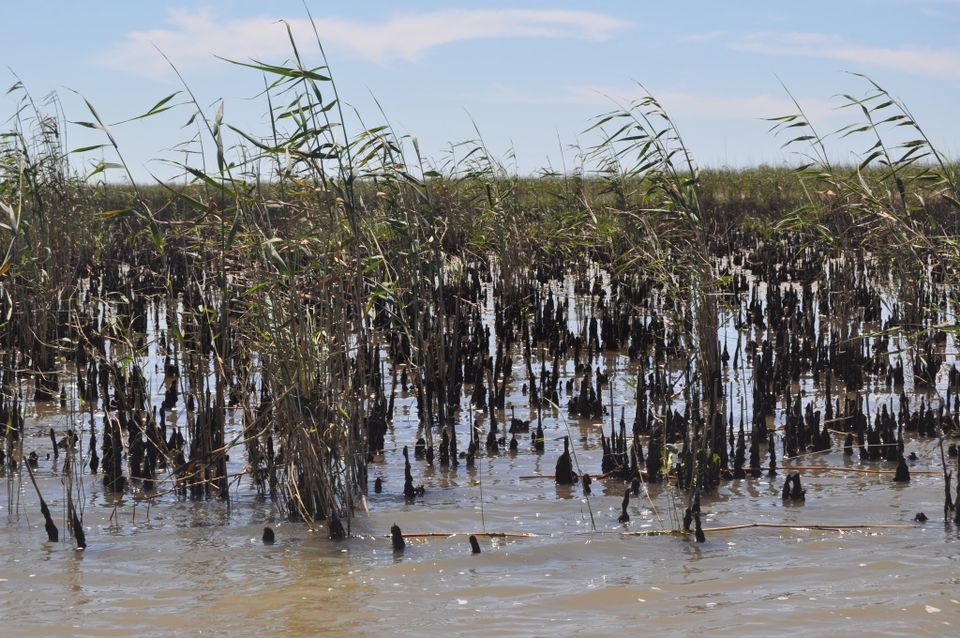The Plagues to Come

The Plagues to Come
by Josh Jack
Apart from their striking beauty, the coastal reaches of southern Louisiana are some of the most productive and fecund environs on the planet, encompassing about a quarter of all the wetlands in the United States. Two-thirds of all the migratory birds in North America lay-over here at some point during their migrations, whether to feed or breed; likewise the gulf fisheries provide roughly two-thirds of all seafood consumed in the USA. And yet this vast welter of rivers, banks, bayous, swamps, marshes, lakes, and bays are some of the most imperiled ecosystems on the planet — roughly 1900 square miles have dissolved into the sea since 1932: an area larger than the the US state of Delaware.
The list of plagues that Man and God have wrought in the Mississippi Delta is already long: the lumber-jacking of all but a handful of our beautiful and benevolent bald cypresses; the straight-jacking of the river through our blind/zealous faith in levee building; the vivisections, depredations, envenomations, and piou$ recriminations of Big Oil; the urban runoff, pig-shit, pesticides, petrochemicals, and fertilizers flushed on us from upstream every day; the hurricanes; the levee failures; the paving over with sand and gravel and concrete… But I worry most about the plagues to come: the rising sea levels, the intensifying storms, the next big oil spill… I worry about the ceaseless appetites of the scores of little bugs that are almost too tiny to see.
As reported Sunday in the Times-Picayune, the latest invasive species has been identified in Southern Louisiana: Nipponaclerda biwakoensis, a Japanese scale bug (a scale, so named because of its resemblance to a fish scale, is close kin to aphids; both feed on plant sap, and many reproduced by cloning.) While something like a quarter of all species in Louisiana are non-native, and while they often out-compete, prey on, or parasitize local species, what is most striking about the Japanese scale bugs is their rapacity, and their choice of diet. The scales seem to prefer the sap of roseau cane: a tall, stout, hardy cane — distantly related to bamboo — that grows in abundance along riverbanks, especially in the coastal reaches. Roseau cane is structurally important to coastal levees and marshes; salt-tolerant and dense-growing, the cane’s thick root plugs hold the loose muck of the delta in place, and its tall stalks comb through the alluvial silt as it washes through, actually building new land. They also provide invaluable habitat for songbirds and fish. Since mid 2016 however, a mysterious blight has been reducing hundreds of acres of stately roseau cane to gooey spindles of brown muck. It’s taken nearly a year and a half to identify the cause (the aforementioned Japanese scale) and this was possible only once a certain parasitic wasp, which uses the Japanese scale as a host for its eggs, was identified in the area. And yet, so armed with better knowledge of the problem, the way toward a solution seems no clearer. The Japanese scales are expanding at a geometric rate, and widespread use of pesticides would do great harm to many of the species that depend on the roseau cane for their survival. The parasitic wasps that lay their eggs on the scales might slightly reduce the volume of their prey, but they cannot possibly check the population boom on their own. There has been some discussion about introducing further invasive species to curb the scale infestation, but one wonders if such action would only be the genesis of some further plague…

